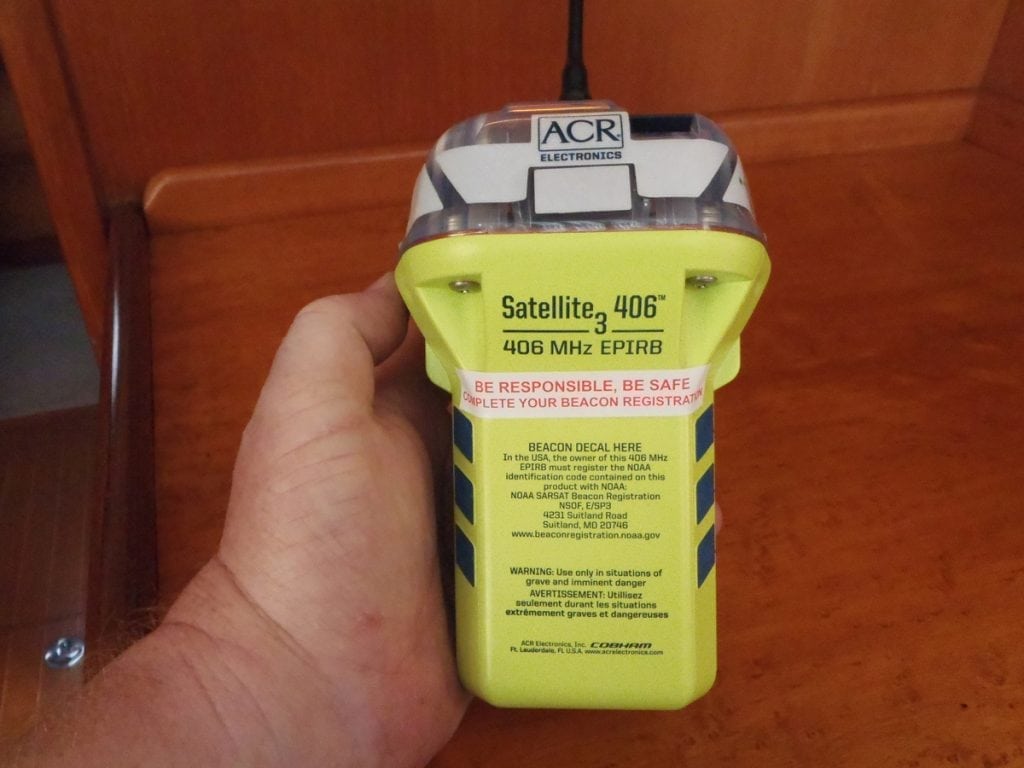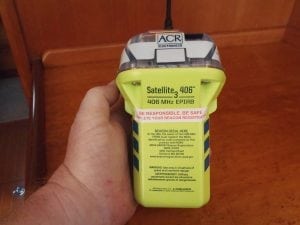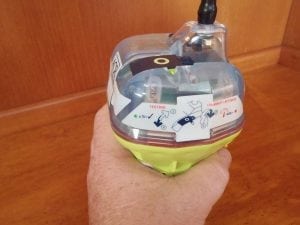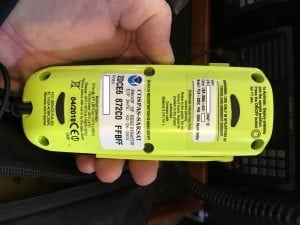The only thing worse than not having crucial safety gear on board is to have it fail when needed. So inspect your EPIRB and PLB.
Emergency Position Indicating Radio Beacons (EPIRBs) and Personal Locator Beacons (PLBs) are expected to work flawlessly in an emergency every time despite minimal maintenance and constant exposure to the harsh marine environment. But! You need to inspect your EPIRB and/or PLB will keep it ready, willing and able.
The primary purpose of any emergency signaling device is pinpointing your location to ensure rescue within the “golden day,” that first 24 hours following an emergency during which the majority of survivors can (statistically anyway) be saved—in essence, taking the “search” out of a search and rescue mission. An EPIRB or PLB goes a long way to accomplish that goal.
When activated, emergency beacons transmit a coded message on the 406 MHz distress frequency, which is then relayed via the Cospas-Sarsat global satellite system and earth stations to the nearest rescue coordination center. Units featuring built-in GPS can provide a location accuracy of 150 feet or less.
EPIRB vs PLB
The popularity of PLBs has soared in recent years due to their portability and lower costs, so why not just skip an EPIRB altogether and go with something you can wear? Although PLBs and EPIRBs work in exactly the same manner, there are a number of differences between them beyond size.
While PLBs transmit a distress signal for a minimum of 24 hours, transmit time for an EPIRB is double that (a minimum of 48 hours). Unlike a PLB, EPIRBs can also configure to automatically deploy and activate in the event of an emergency. Category I EPIRBs are designed to float free from a sinking vessel and turn on automatically when it comes into contact with water, while a Category II rating denotes those that are manually activated and deployed.
Unlike a PLB, which is registered to a person, an EPIRB is registered to a specific vessel, which means you can’t legally take it with you to use onboard another vessel.
Testing and maintenance
A good rule of thumb: inspect your EPIRB or PLB once a month. Experts agree that EPIRBs and PLBs should be inspected monthly or prior to an extended cruise. When inspecting and conducting any test, exercise extreme caution to avoid inadvertent activation and generation of a false distress alert.
Start by inspecting the exterior of the beacon thoroughly for any physical damage, such as corrosion, cracking, and water ingress. For EPIRBs, you’ll also want to inspect the mounting bracket or housing. EPIRBs float free when released, so they should be stowed in an unobstructed location. Such installations will also have a Hydrostatic Release Unit (HRU) designed to sense water pressure if a vessel sinks, releasing the mount and allowing the EPIRB to float to the surface. HRUs expire every two years, so note the expiration date during your inspection.
Next up is checking the expiration date of the battery. This will be shown on the beacon manufacturer’s label or a separate sticker. Battery life for most units is five years, although some newer models exceed that. Replace the battery if the beacon has been activated. It must also be replaced on or before the label’s expiration date.
Verify the presence of a current NOAA registration sticker. Federal law requires all U.S.-coded EPIRBs and PLBs to be registered with the National Oceanic and Atmospheric Administration (NOAA). This registration provides search and rescue organizations emergency contact information so that if your beacon is activated, they’ll know who they’re looking for. It also gives them someone to call and verify that it’s an actual emergency, rather than a false alarm. This means you’ll need to update your registration if any of the information changes. Beacon registration or updates are easily done online at sarsat.noaa.gov/beacon.html.
Self Test
Once the physical inspection is complete, conduct a self-test by following the manufacturer’s instructions. Following these instructions is crucial to ensure your beacon is working properly and to prevent accidental activation.
When conducting a 406 MHz beacon self-test, the EPIRB or PLB is allowed to radiate a single burst that’s specially coded so that it is ignored by the COSPAS-SARSAT system. Most EPIRBs will have a visible test switch, one that’s spring loaded so that it can’t be left on inadvertently and drain the battery. Depending on the unit, a combination of beeps and light or strobe flashes will indicate test circuits are operating properly. Many newer EPIRBs and PLBs will display tests and results via an integral display.
If you accidentally activate your EPIRP or PLB, turn the unit off and cancel the false alert by calling the nearest U.S. Coast Guard Station. They, in turn, will contact the nearest Rescue Coordination Center to cancel the alert. As part of your boating season startup, inspect your EPIRB and PLB can be a lifesaver.
By Frank Lanier, Southern Boating May 2018

















